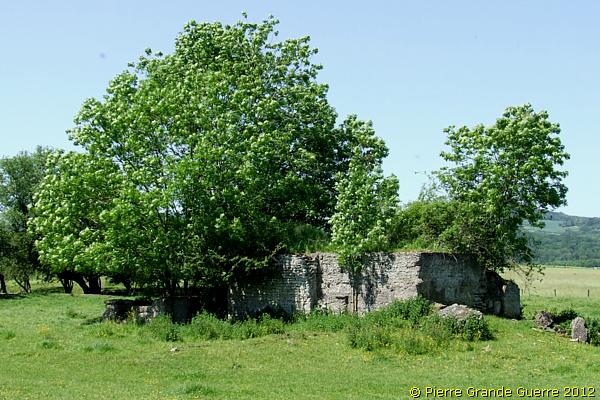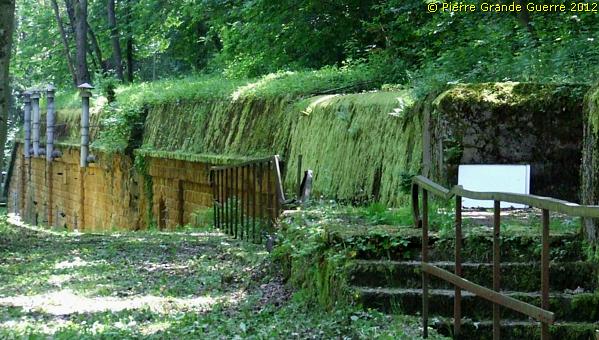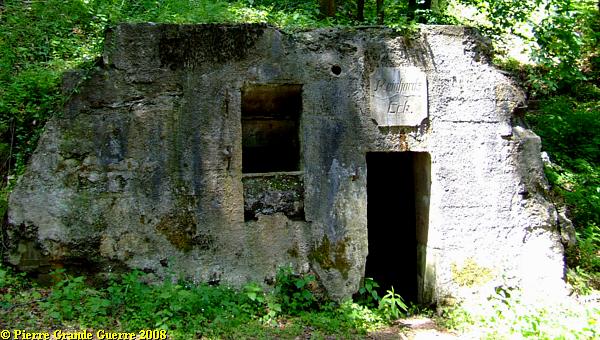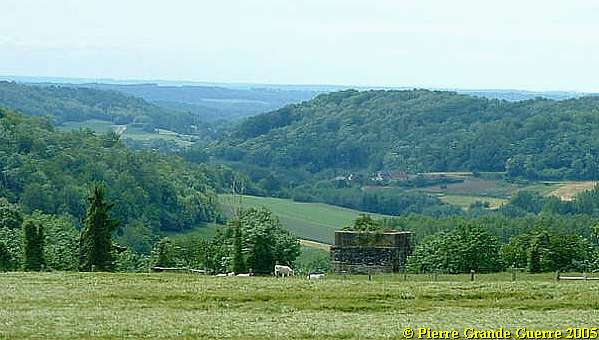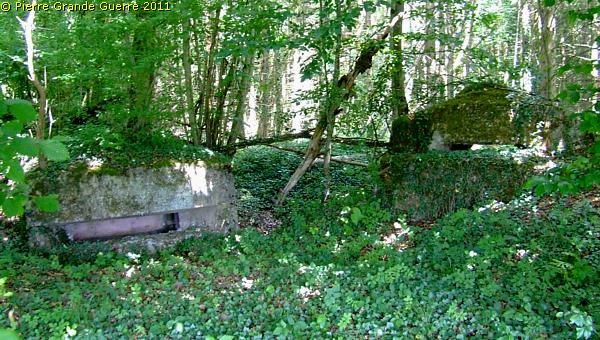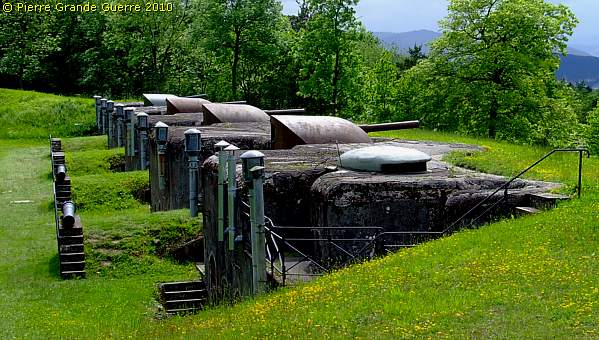VOSGES - Wisembach - Le Haut de Faîte
- by duda-wsm
- •
- 21 Aug, 2019
- •
Year of visit: 2008, 2010
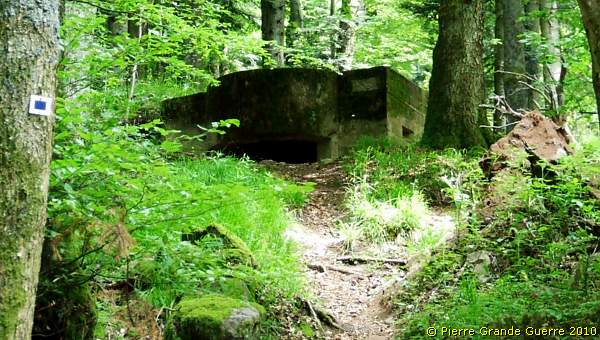
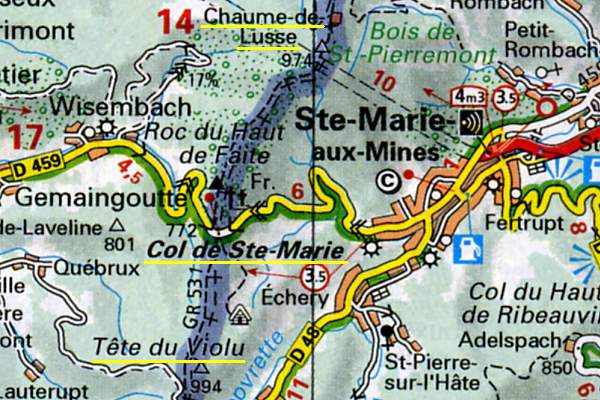
The Col de Ste. Marie lies east of Wisembach and west of Ste. Marie-aux-Mines, at a height of 776 meter

On the previous page about the Tête du Violu-Bernhardstein, we visited the relics at the south side of the pass, ...
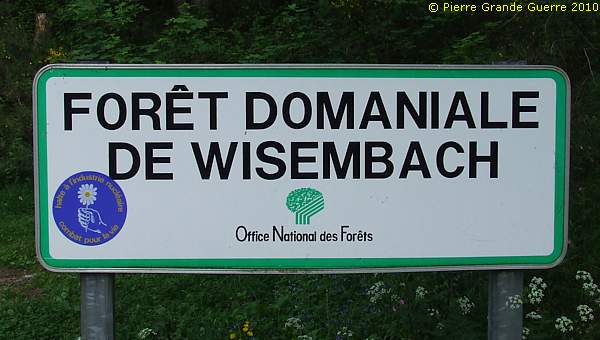
... this time we visit the northern side of the pass in the Forêt Domaniale de Wisembach at the southern slopes of the Chaume de Lusse.
Our walking route
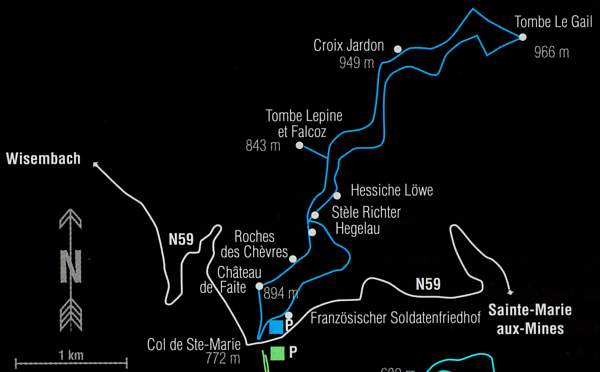
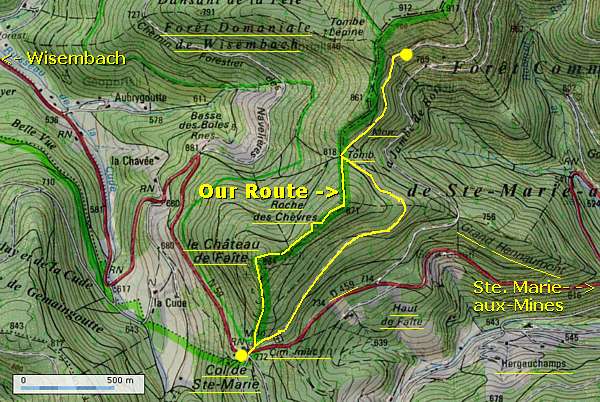
Along the northern side of the road, on the Col, stands a memorial stèle, for 2 French officers, who died here on the Col on 22 August 1914. This Sternberg-Boudet Memorial is the point of departure and later the finish of our walk.
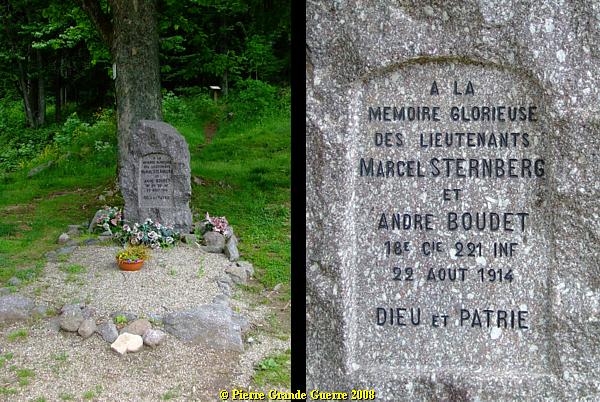
At a distance of not more than 100 m. lies the French Col de Ste. Marie National Cemetery.
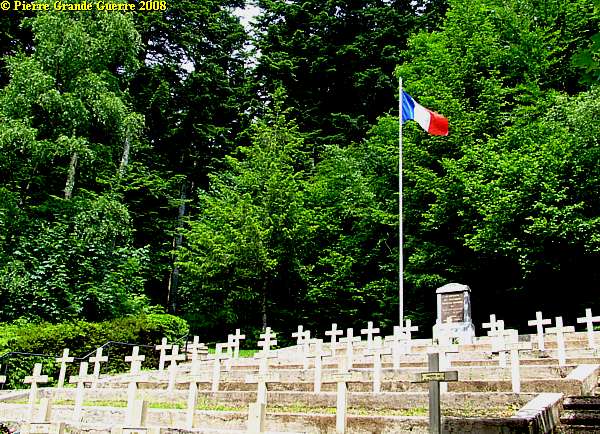
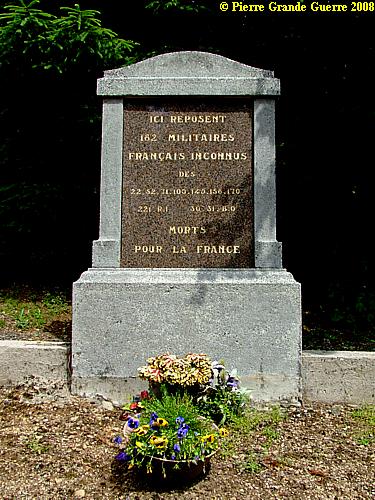
Even officers were killed during these fights. Right: the grave of a Sergeant Major of the 149e R.I., fallen on 9 August.
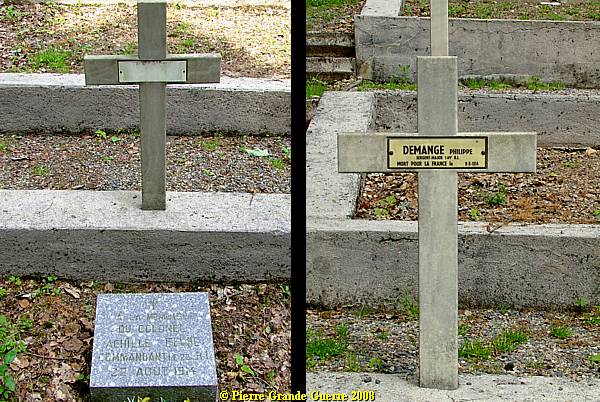
Left: the grave of Colonel Achille Fèvre, Commander of 22e R.I., killed on 22 August 1914, close by here, on the Col.
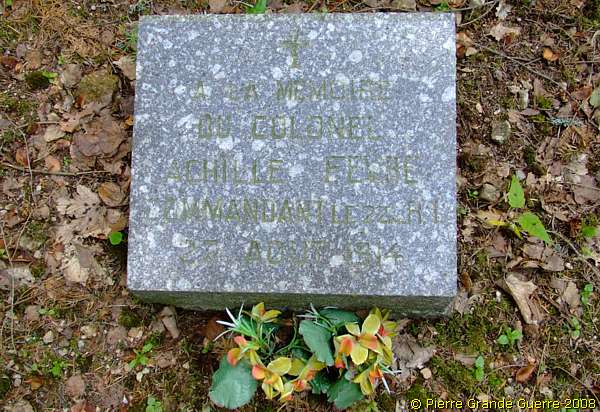
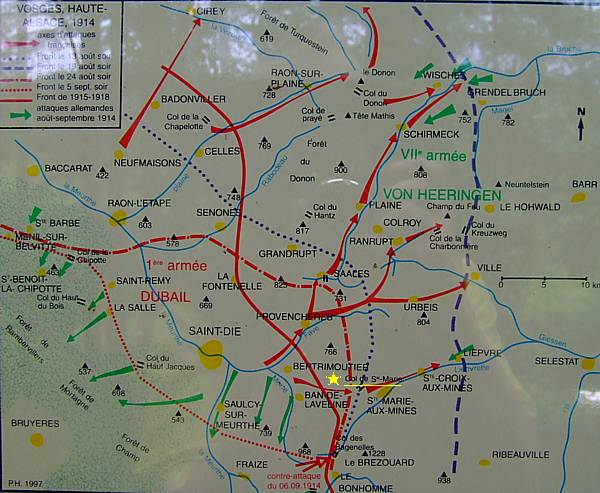
On the col you will find this informative map, showing the battles, attacks, and counterattacks between the French 1st. Army of General Dubail against the German VIIth. Army of General von Heeringen of August and September 1914.
The red, unbroken, line points out the front in this sector, as it would freeze in a "stalemate"-situation from 1915 until 1918.
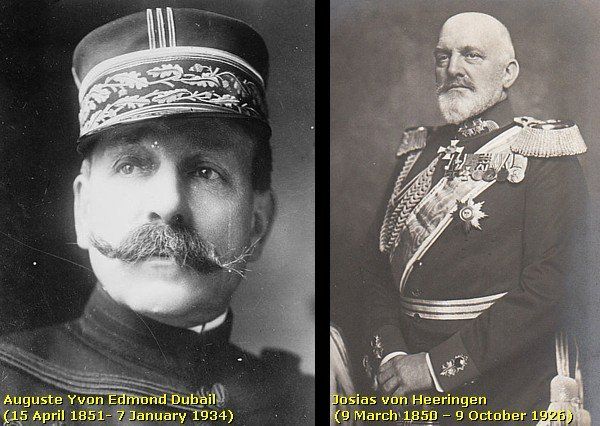
There were fierce fights for the Pass of Ste. Marie from 8 August 1914 until 24 August 1914, and again on 9 September until the beginning of November 1914.
On 8 August General Dubail ordered the 21st Army Corps to attack the Col de Ste. Marie, the Col de Bonhomme and the Chaume de Lusse. It was the task of the 31e Bataillon Chasseurs à Pied to capture the Col de Ste. Marie and de Chaume de Lusse in the north at the cost of many casualties.
On 9 August the 149th Infantry Regiment had to fight in this front sector. 440 Men were killed or went missing in action.
On 16 August the French 2nd Battalion of the 99e R.I. under commandant Arbey entered the village of Ste. Marie-aux-Mines. The French had to withdraw on the 22nd. to the Col de Ste. Marie under pressure of General Grüber's 9th Brigade.
On the 23rd the French recaptured the Col. On the same day the Germans found the French attack plans for the 24th on the body of a dead French soldier.
On the 24th the Germans, attacking from the Pain du Sucre and the Chaume de Lusse, encircled the Col and recaptured it. During these fights the French lost several important officers, amongst others the regimental commanders, Colonel Fèvre ( 221e R.I.), Lt. Col. De Malgaive (349e R.I.), and Lt. Col. Cullard (358e R.I.).
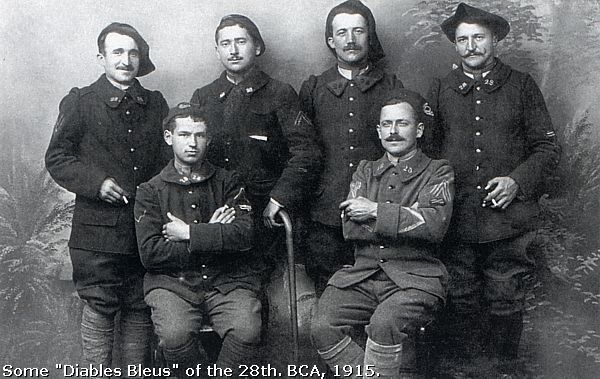
After 3 attacks and fights with bayonets the "Diables Bleus" or "Blue Devils" of the 28e Bataillon Chasseurs Alpins under command of Capitaine Regnault and the 343e R.I. succeeded to caprture the Tête du Violu on 1 November 1914. The French reached the summit and occupied the western slopes of the Tête du Violu.
The Germans though would hold the eastern slopes of the Bernhardstein (856m.), some 700 m. to the south, and the pass itself. The area around the Pass of Ste. Marie, the valley of Hergauchamp, and the town of Markirch were many times the target for French artillery bombardments.
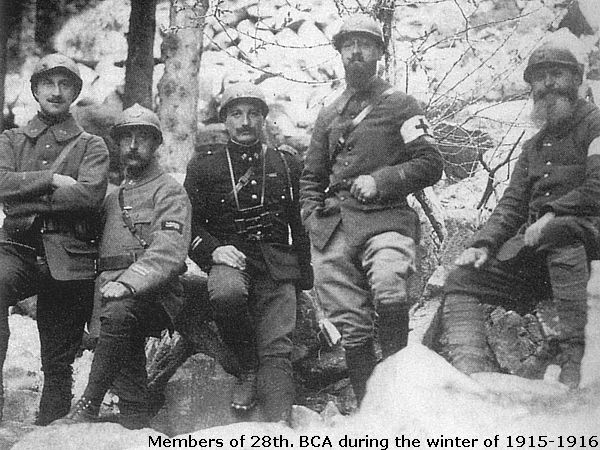
From the Sternberg-Boudet Memorial we take the track behind it northward.
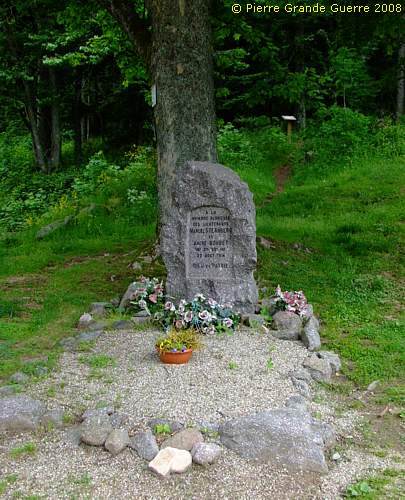
Along a difficult track we go upward, where we find some traces of German trenches.
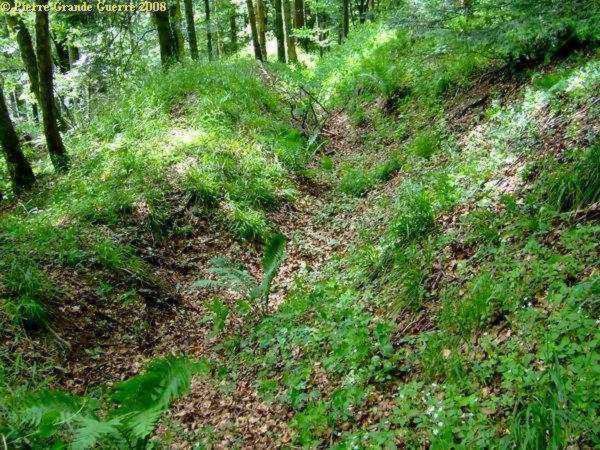

"Leber" Front Sector
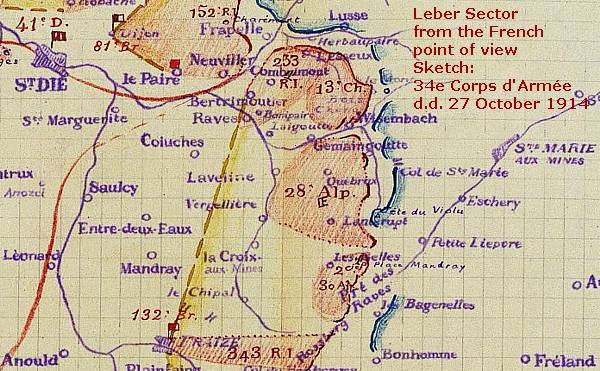

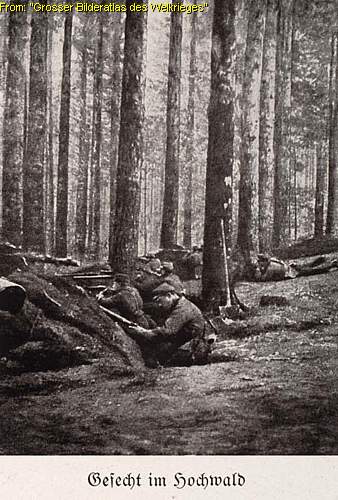
With intervals this front sector has been defended by the 61. Landwehr Brigade, a Prussian reserve unit, consisting also of Hessian and Bavarian units, under command of General Freling, from 1914 until 1917.
In 1915 the Jäger Bataillon 8 and Landwehr Infanterie Regiment 80 defended this northern part of the "Leber" Sector.
In 1916 and 1917 the Landsturm Bataillon Friedberg defended this "Hochfirst". In the second half of 1917 the Bavarian Landsturm Bataillon Landshut took over the defence of the Haut de Faîte. In 1918 the Bavarian Ersatz Regiment 2 manned these positions, north of the Col de Ste. Marie.
(For more info about the southern
"Leber" sector, visit first my
previous photo impression about the Tête du
Violu-Bernhardstein.)
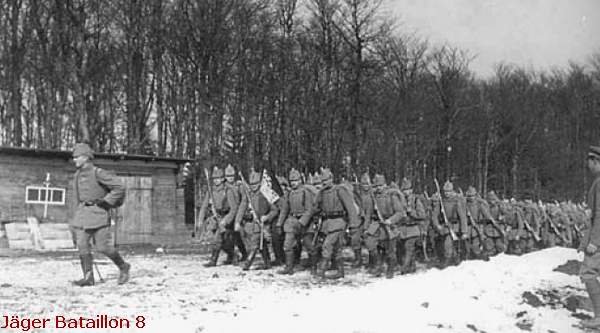
This late-war machine-gun bunker guards the road of the pass below.


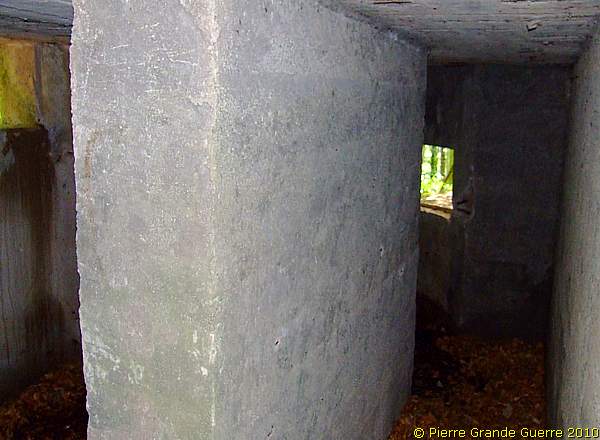
If the trees would have been cut down again, the machine-gun would overview the road on the pass.
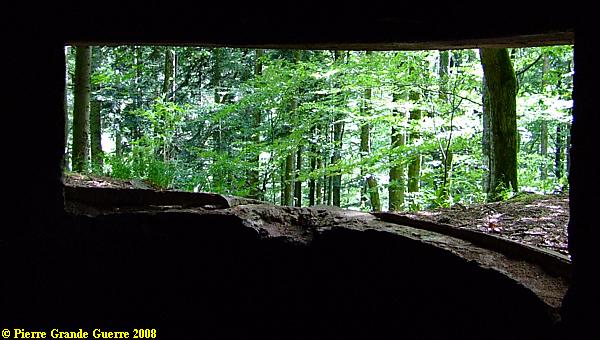
I estimate not more than 50 m. more upward: another identical, late-war machine-gun bunker.
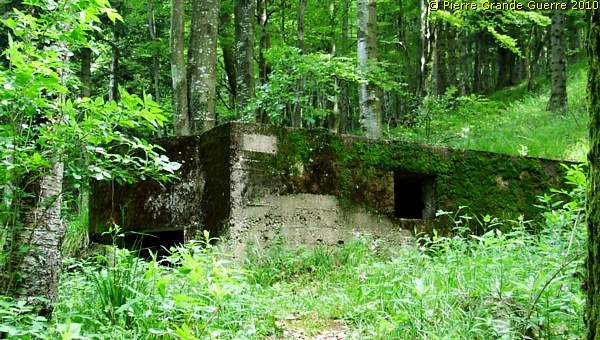
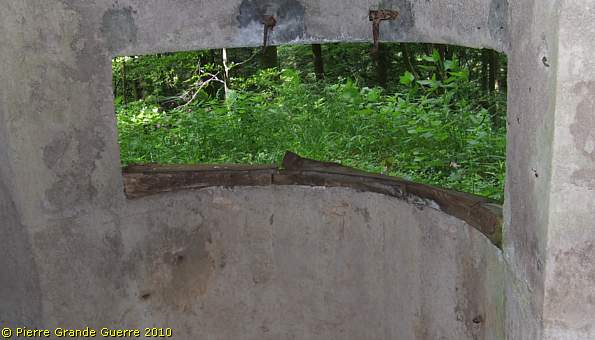
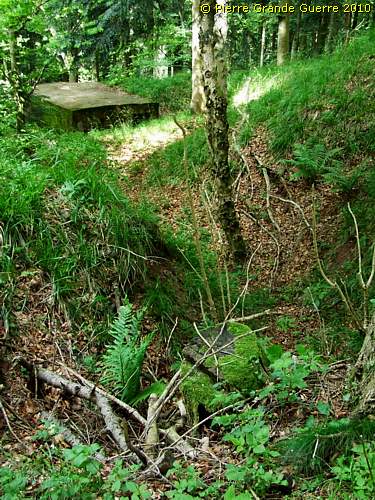

A 1915 model machine-gun bunker (masonry work) ...
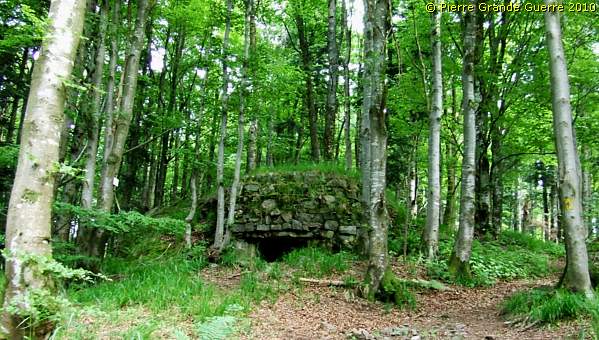
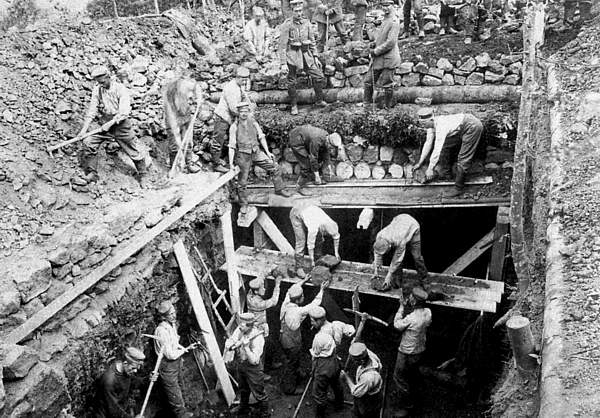
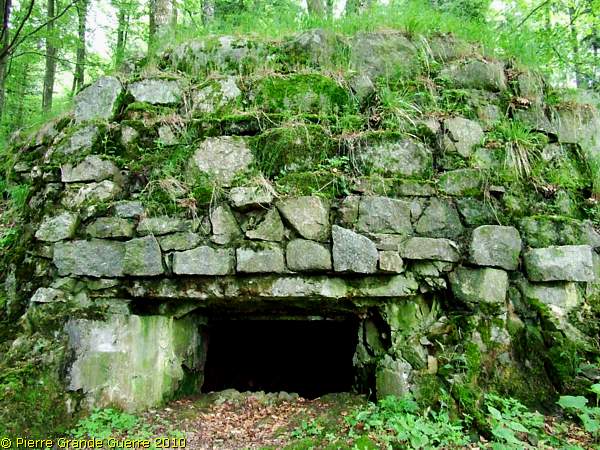
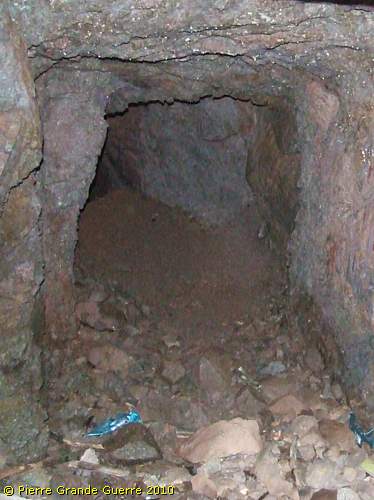

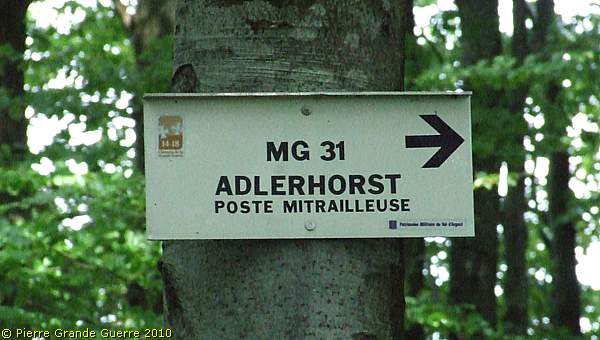
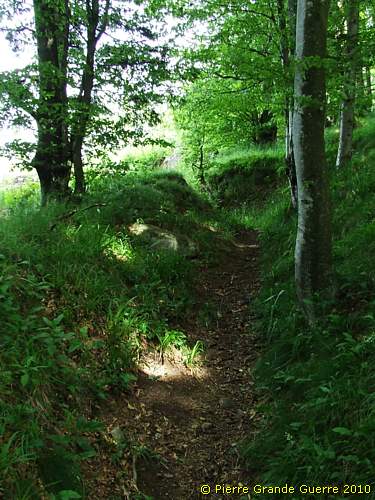
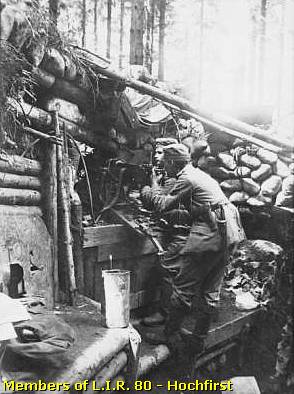
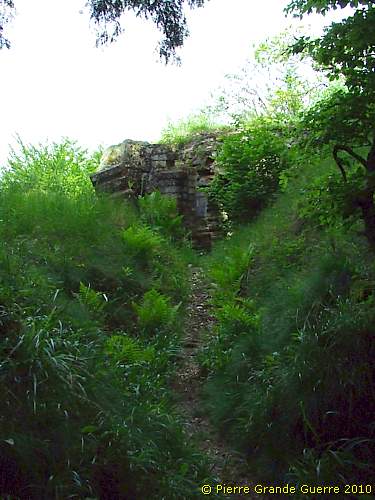
On the steep ridge the "Adlerhorst" machine-gun bunker faces west.

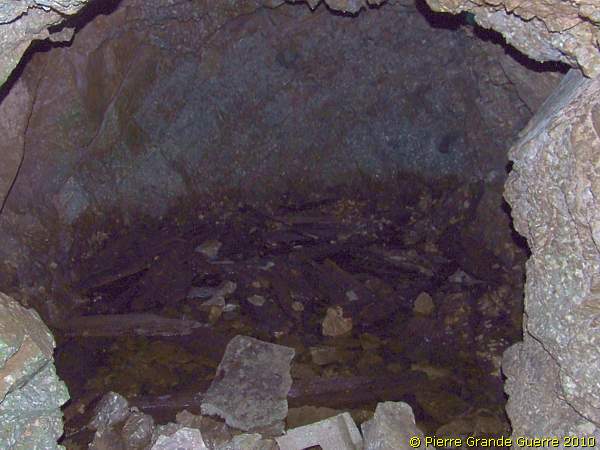
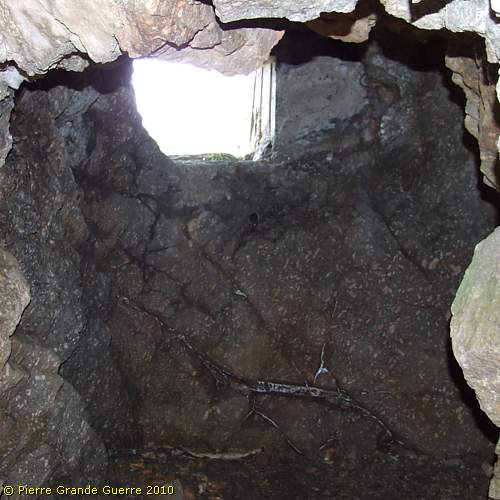
Le Haut de Faîte has claimed the lives of many soldiers, not only of French soldiers, but also of many German soldiers.

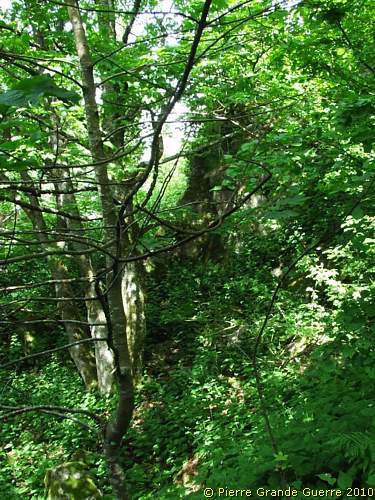
From this point we have a magnificent view from the former German borderline to “France”.
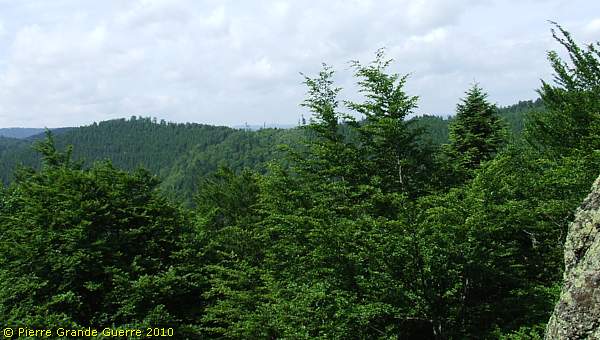
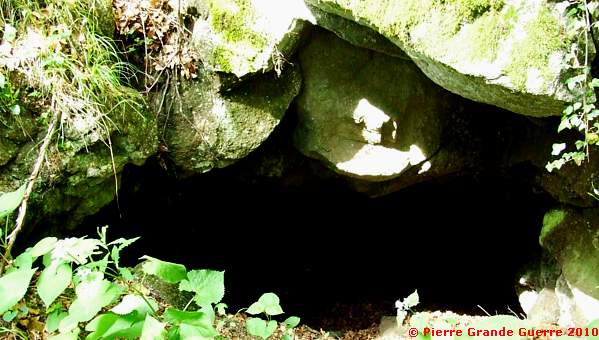
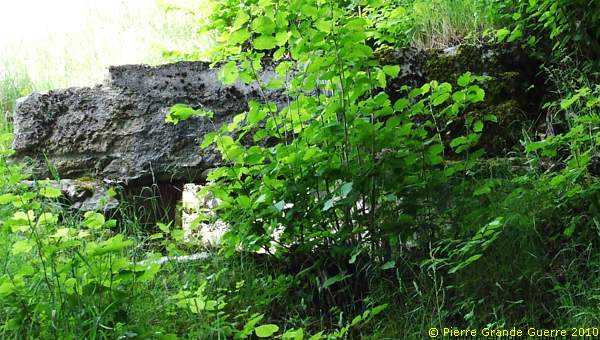
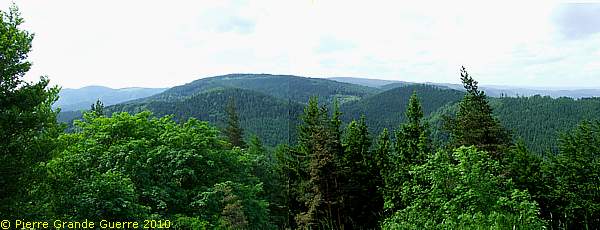
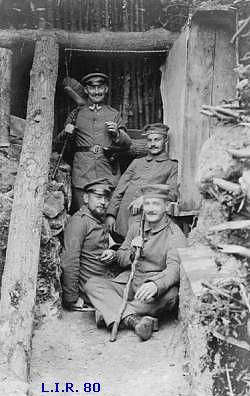
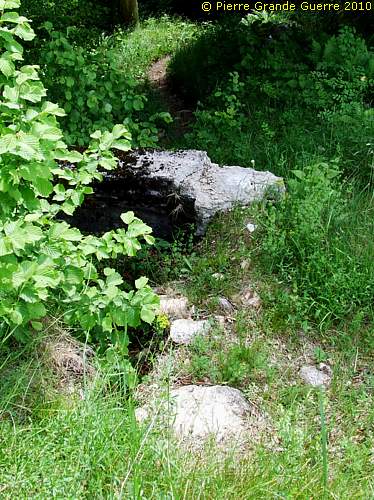
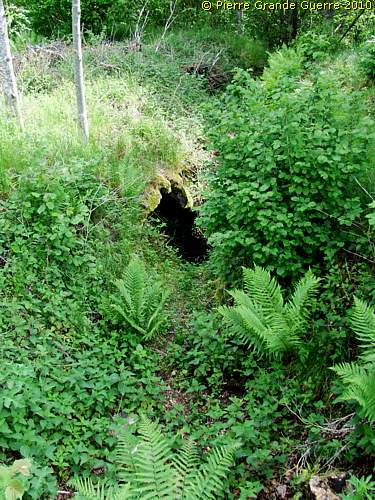
... dug-out entrances, hidden under the dense vegetation! Don't fall in. I only show you a few here.
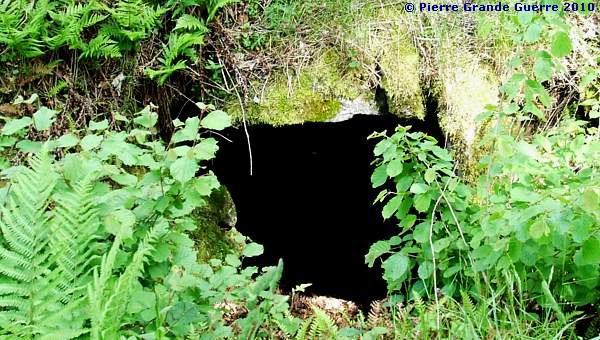
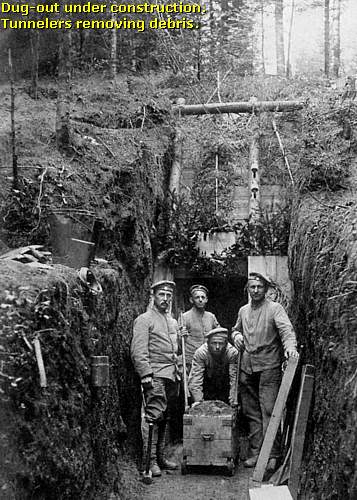
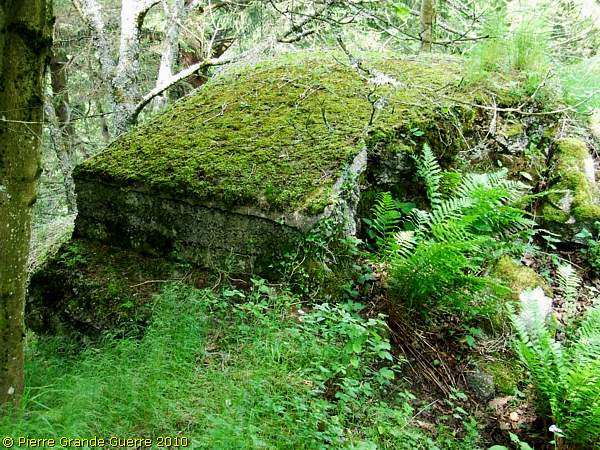
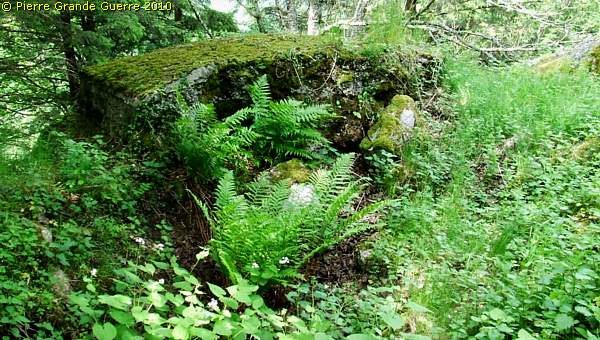
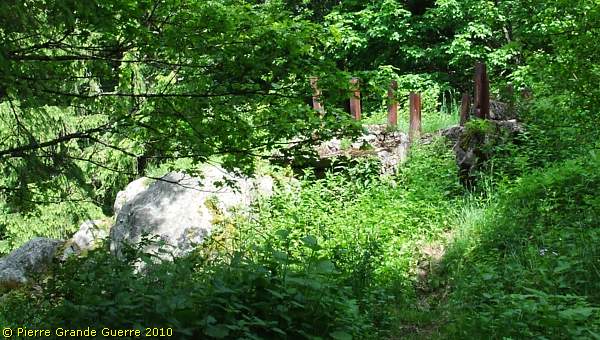
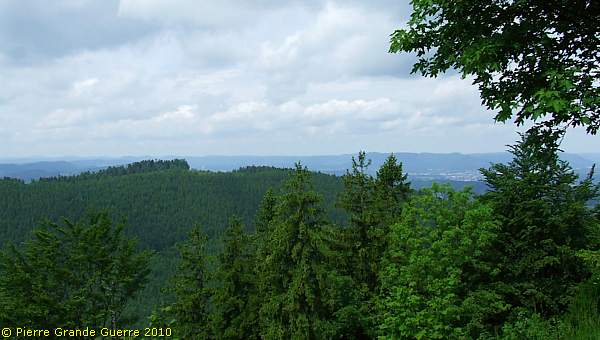
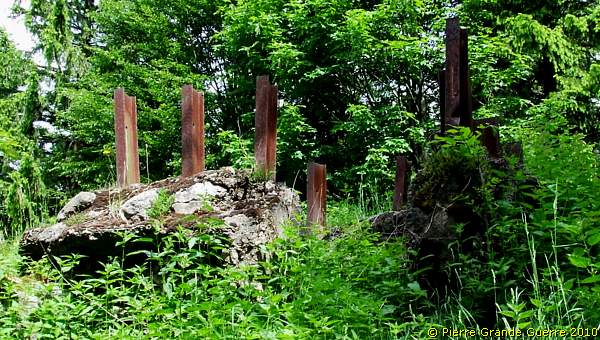
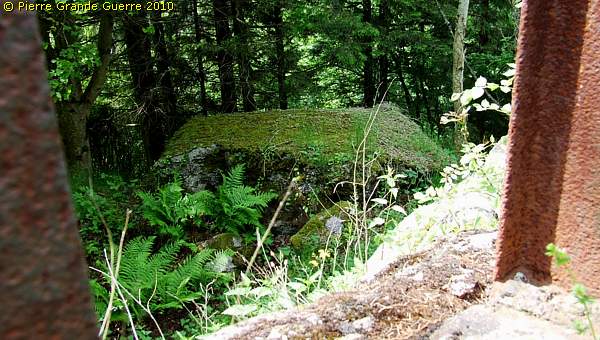
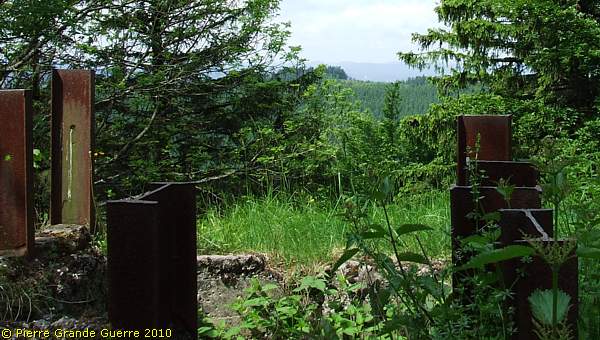
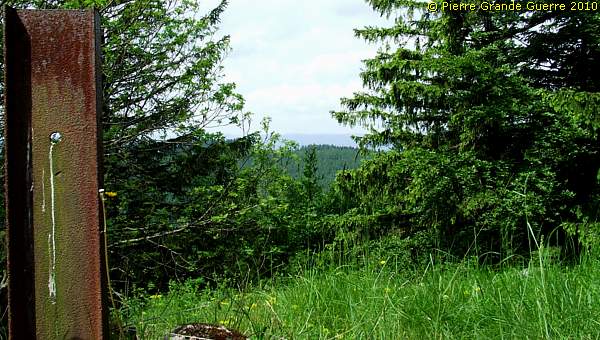
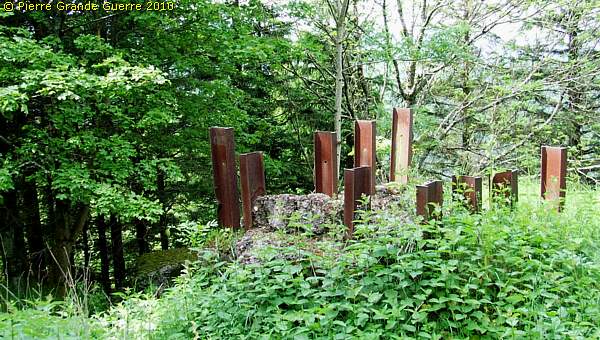
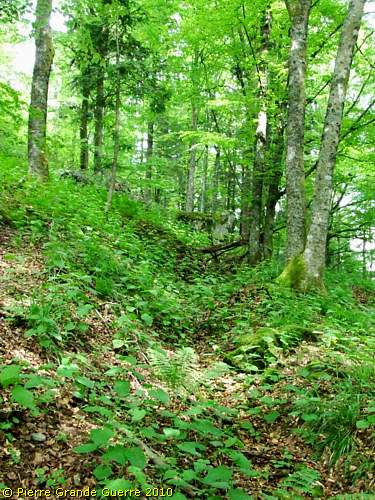
We switch to a track that follows the 1871-1918 borderline. A border stone.
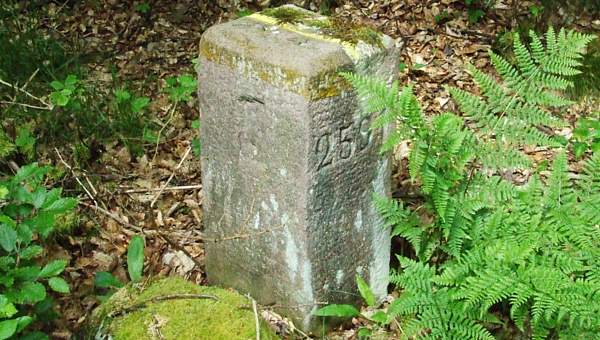
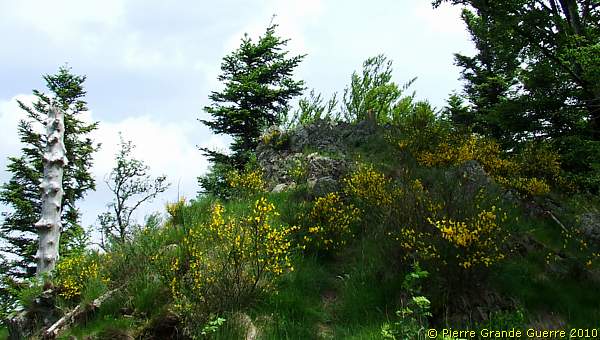
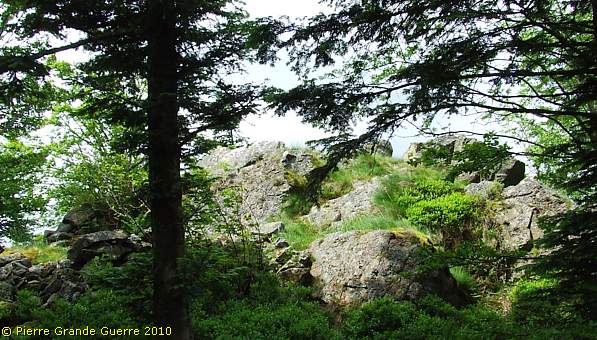
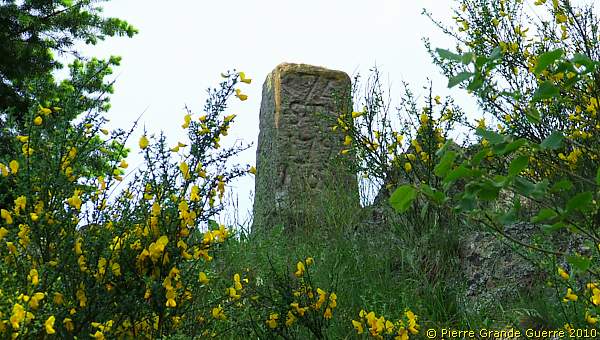

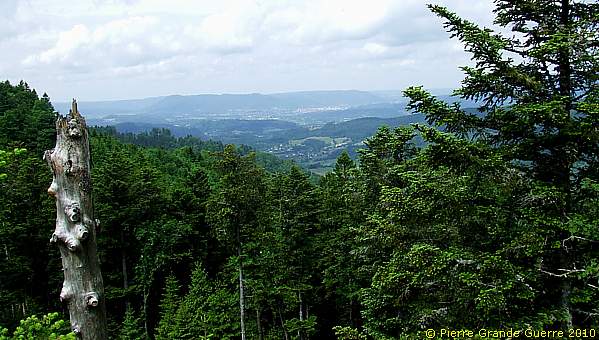
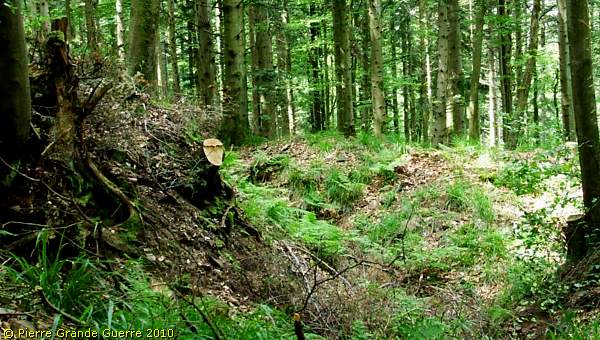
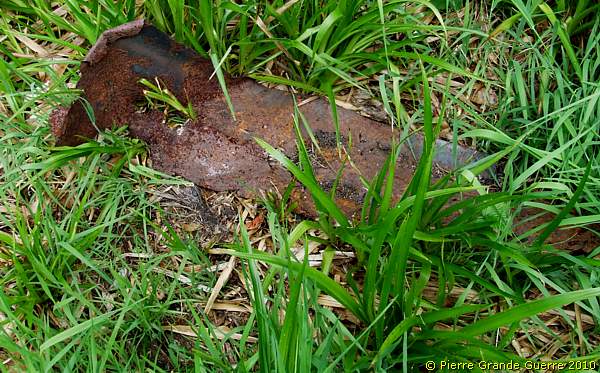
"Camp Hegelau"

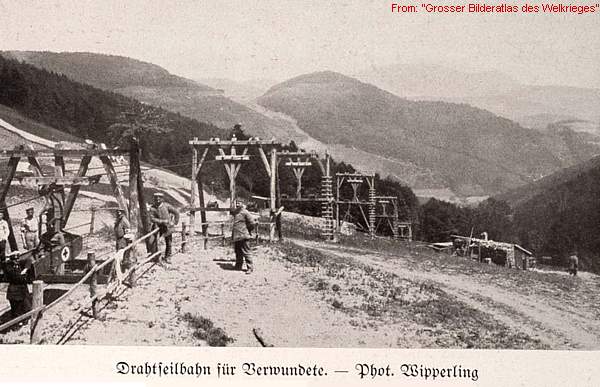
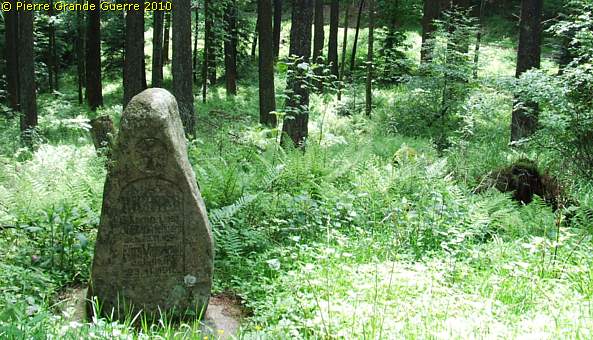

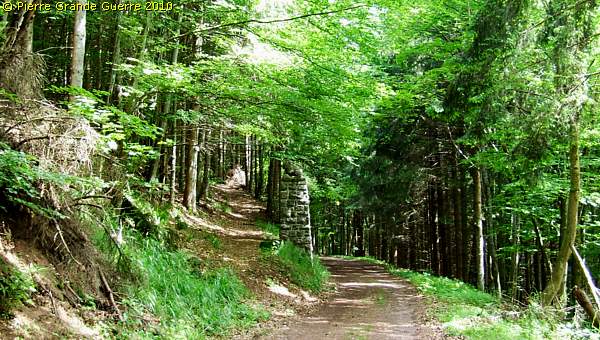
At the "Hessische Löwe", the Hessian Lion, the path left upward returns to the border and to summit of the Chaume de Lusse.

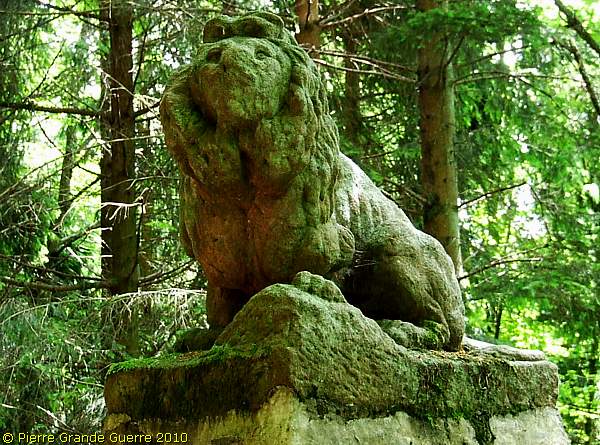
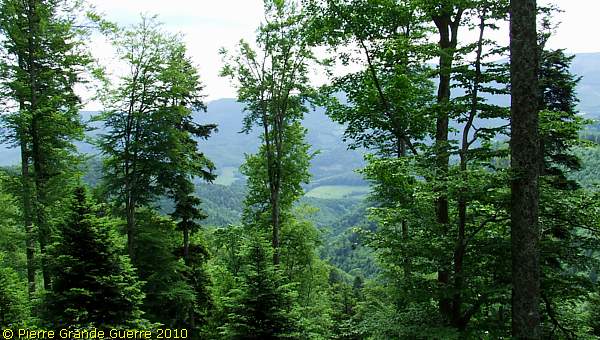
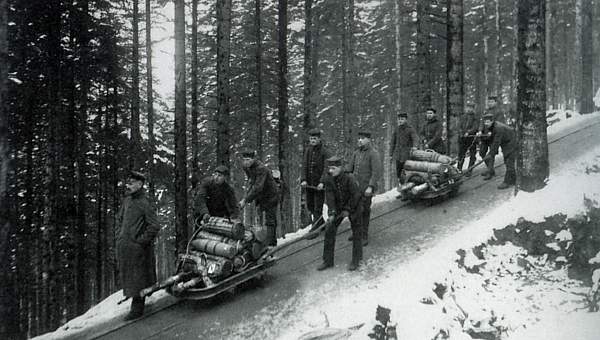
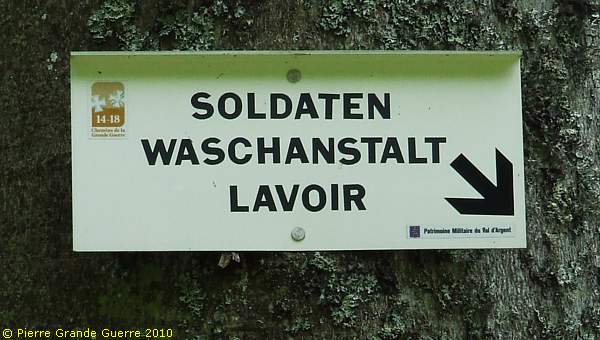
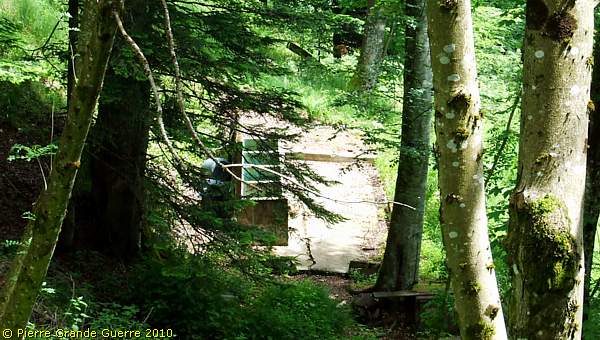
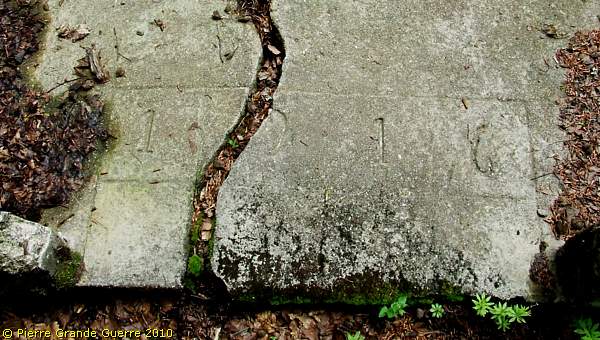
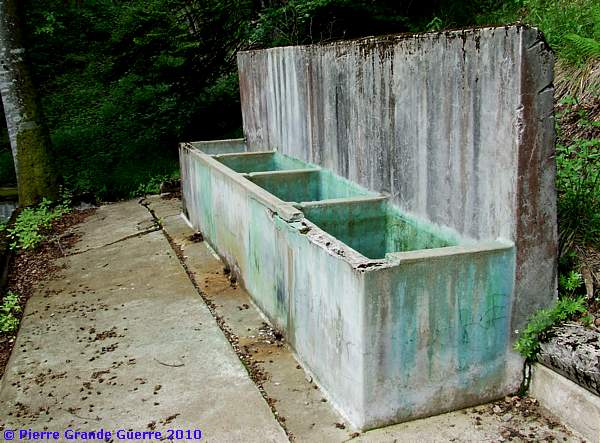
Souvenir hunters, please, leave these few relics alone for the enjoyment of your other fellow travellers.
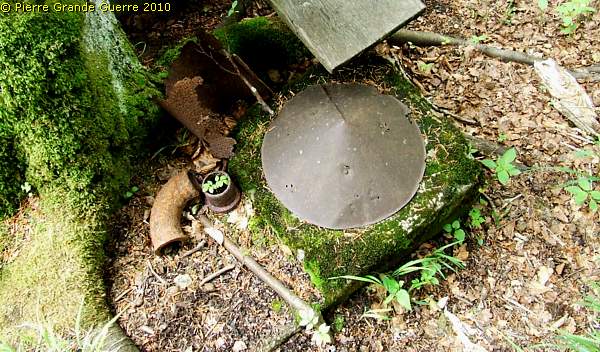
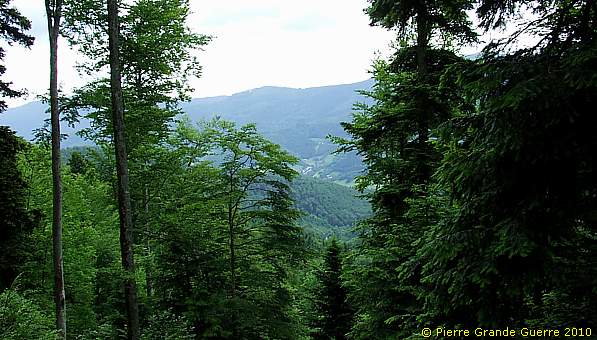
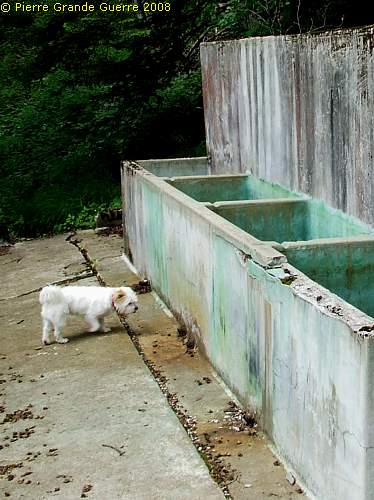
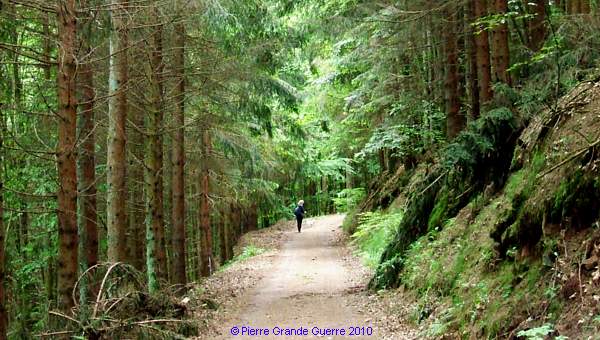
A panorama view southward into the direction of the Brézouard. The Lingekopf and the Tête de Faux are at the horizon.
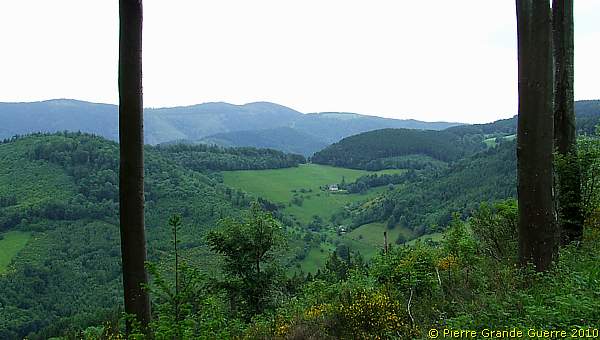
From a slope of the Haut de Faîte a last south-westward view at the "German side" of the Tête du Violu and the Bernhardstein.
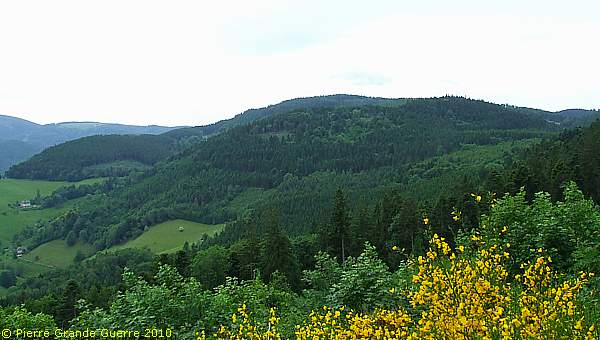
We have returned to our starting point of our walk at the Sternberg-Boudet Memorial at the Col de Ste. Marie.

Continue to: "Bertrimoutier - Frapelle"
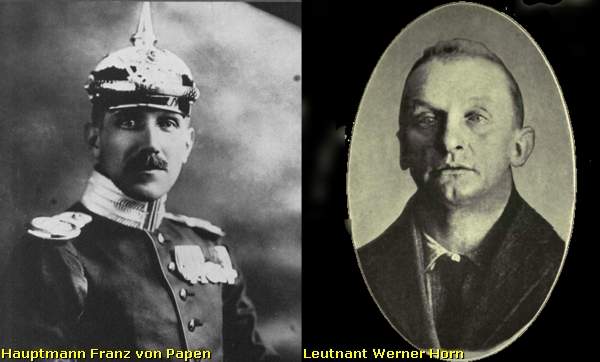
Inleiding: Franz Von Papen & Werner Horn; schaker en pion
Onlangs stuitte ik in een oud boek (1) van 1919 op een opmerkelijk verhaal over een Duitse Luitenant, die in begin februari 1915 een half geslaagde bomaanslag pleegt op een spoorbrug over een grensrivier tussen de Verenigde Staten en Canada. Ook al staat de bekentenis van de dader, Werner Horn, deels in het boek te lezen, de naam van zijn opdrachtgever zal Horn blijven verzwijgen. Na wat verder zoeken vond ik ook de naam van Horn’s opdrachtgever, Franz von Papen, een van de aangeklaagden van het latere Neurenberg Proces in 1946.
In een Grote Oorlog als de Eerste Wereldoorlog is Horn’s aanslag op de brug uiteraard slechts een bescheiden wapenfeit. Toch vermoed ik dat dit relatief onbekende verhaal, dat de geschiedenis is ingegaan als de “ Vanceboro International Bridge Bombing ”, nog interessante kanten kent. Het is onder andere een spionageverhaal over hoe in een groter plan een sluwe schaker zijn naïeve pion offert.
Beknopte situatieschets Canada en de Verenigde Staten in 1915

This trip we start at the Léomont near Vitrimont and we will with some exceptions concentrate on the Battle of Lorraine of August-September 1914 in the area, called, the “Trouée de Charmes”, the Gap of Charmes.
After the Léomont battlefield we continue our explorations to Friscati hill and its Nécropole Nationale. Next we pay a visit to the battlefield of la Tombe to go on to the Château de Lunéville. There we cross the Vezouze to move on southward to the Bayon Nécropole Nationale. At Bayon we cross the Moselle to pass Charmes for the panorama over the battlefield from the Haut du Mont. North-west of Charmes we will visit the British Military Cemetery containing 1918 war victims. From Charmes we go northward to the battlefield of the First French Victory of the Great War, the Battle of Rozelieures of 25 August 1914. North of Rozelieures we will visit the village of Gerbéviller. From there we make a jump northward to visit the ruins of Fort de Manonviller to finish with an interesting French Dressing Station bunker, west of Domjevin.
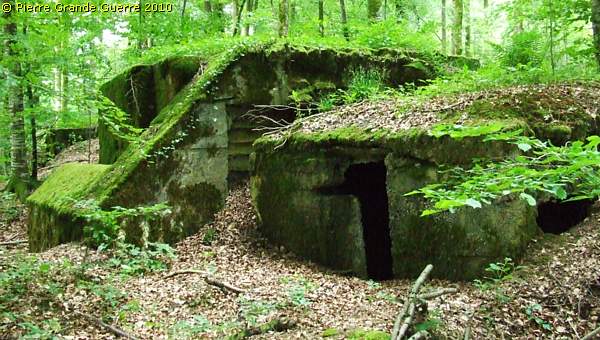

During this visit, we try to focus on the day that the momentum of the battle switched from the French side to the advantage of the Bavarian side: the day of 20 August 1914, when the Bavarians rapidly re-conquered the territory around Morhange , being also the day of the start of their rather successful “Schlacht in Lothringen”.
We will visit beautiful landscapes of the "Parc Naturel Régional de Lorraine", memorials, ossuaries, and cemeteries. Sometimes we will divert to other periods of the Great War, honouring Russian and Romanian soldiers, who died in this sector. We start our route at the border village of Manhoué, and via Frémery, Oron, Chicourt, Morhange, Riche, Conthil, Lidrezing, Dieuze, Vergaville, Bidestroff, Cutting, Bisping we will finish in Nomeny and Mailly-sur-Seille, where the Germans halted their advance on 20 August 1914, and where they constructed from 1915 some interesting bunkers.
